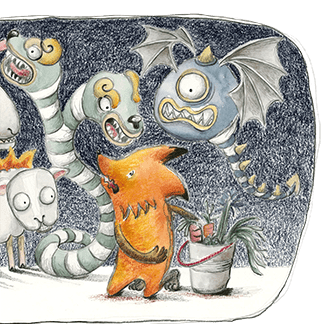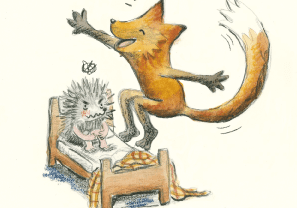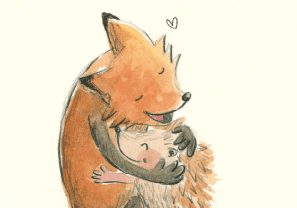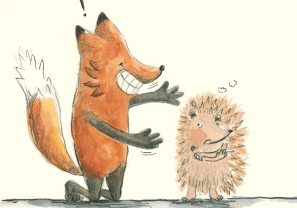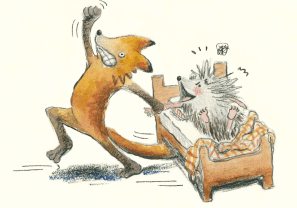Zorrizo and the Hedgefox, published by Editorial del Colegio Bilingue Jose Max Leon
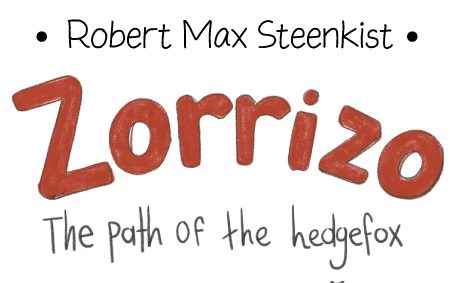
Human beings have the possibility to build from opposites, as happens in Zorrizo and the Hedgefox.
The philosophical method known as dialectics (dialektiké) invites us to expose an idea (thesis), contrast it with its opposite (antithesis), and from this friction, generate a new way, another symbol, a third consensual option (synthesis). We have the possibility, even if it is not the most frequent decision.
The difference that separates two opposites contains the power to create something that did not exist before. Opposing forces can generate new forms from friction. The ability to peacefully interact with others differentiates an architect of ideas and solutions from a passive component of reality, something that destroys.
This power can only be deployed through the peace and transparency of an exchange –instead of a clash. Trying to convince others, understanding their arguments, and debating so that they comprehend mine, are some of the actions of dialectics. They imply respect, flexibility, patience, and creativity, among other values.
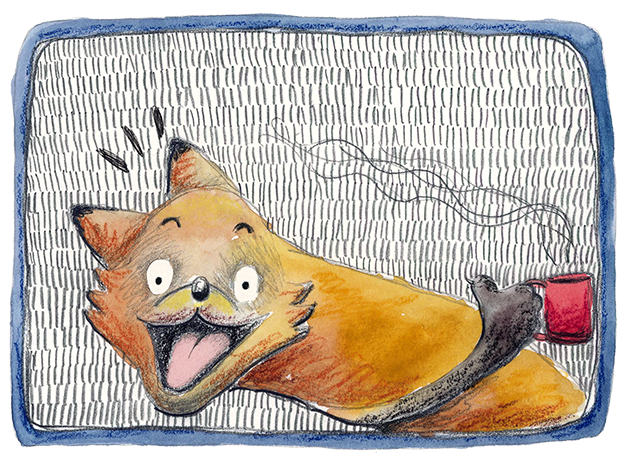
The Greek poet Archilochus wrote, “A fox knows many things, but a hedgehog knows one big thing.” Rekindling this metaphor, political scientist and philosopher Isaiah Berlin proposes to divide writers and thinkers –and perhaps all of humanity, into two general categories: those who sum everything up to a central vision, to a single coherent system through which they think and feel, and those who follow the trail.
The former are steered by a universal guiding principle and tend to be like hedgehogs: prudent, introspective, analytical, measured, defensive… They live, feel, and create according to centripetal logic: the force of their existence revolves around a center, with forms that never exceed the parameters of the predictable.
The other group includes the followers of many varied centers, which are not necessarily related to each other and do not seem connected at first sight. They are not afraid of contradiction. Their thinking tends to be scattered, and their movements impulsive. The freshness of improvisation rather than the painstaking path of planning leads their way. They are irresponsible first before falling into indoctrination. They believe that the essence of things is conditioned by multiplicity and change. Their logic is more centrifugal, usually far from perfect and predictable.
A metaphor always leaves room for nuances. One should not insist on an absolutist classification of nature, least of all human nature. It is so complex and beautiful that it escapes the aspirations of a deterministic language (hence the value of poetry, but let us leave that for another book). This dichotomy should serve only as a starting point for observation and comparison.
Writing a children’s book is a fascinating challenge: ideas must be simple and compelling. It is necessary to model the text precisely and choose words wisely. It is false that one “returns” to the simplicity and clarity of children.
The best way to write such a book is to accept that the best readers remain direct, honest, and demanding with their authors and illustrators, despite the passing of time. The best way to interact with children who read is to accept that they are the finest critics and the best influence.
Bilingualism in a story about two characters who clash and build from their differences seemed a natural component in a book about the power of dialectics.
If I must respect, study, and try to understand others to build with them, the ability to incorporate another language into my universe is a skill that I need to learn.
Working with Cristina León has made the making of Zorrizo and the Hedgefox a joyful challenge. I am very proud to have found an inspiring burrow for an artist of her stature. Each shape and each stroke was a moment that affirmed our friendship. It was a pleasure to once again find centers and peripheries that welcome us.
